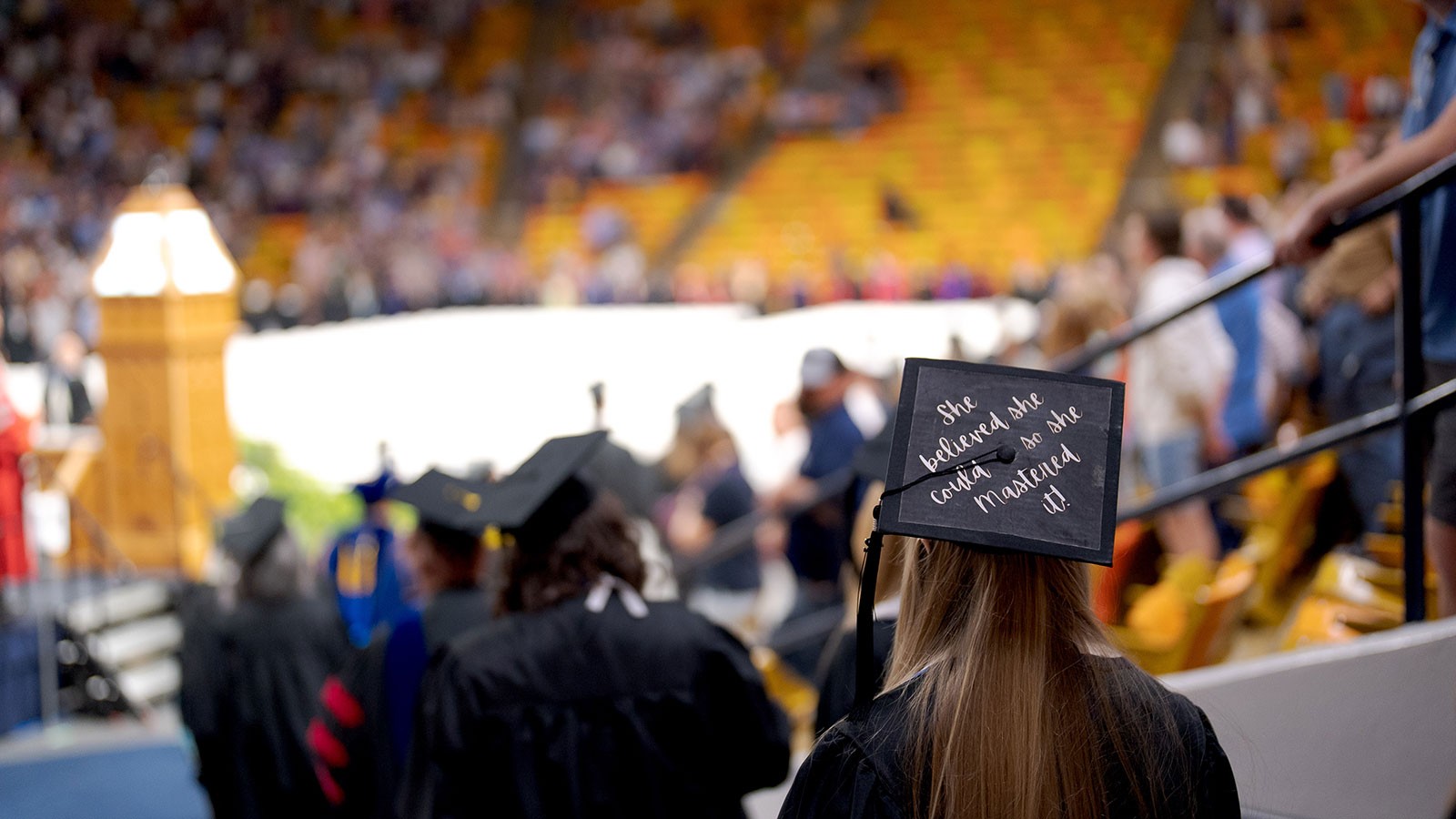Students Bring Expertise, Experience to USU's MSLT Program
By Andrea DeHaan |
LOGAN — Jana Quadros describes herself as “a 40-year-old woman, spouse, mom, teacher and student.” A native of Brazil, Quadros started work as a dual language immersion teacher in Utah in 2017. Two years later, she joined the Master of Second Language Teaching program at Utah State University.
“I am a true believer in the power of education,” said Quadros, who completed her degree this fall, stating she now feels “much more qualified as a language teacher, who can better teach … the culture of Portuguese-speaking countries.”
USU’s MSLT is an interdisciplinary program requiring coursework focused on language, literacy and culture, emphasizing methodology, curriculum development and assessment. Students culminate their studies by completing a master’s portfolio.
Like Quadros, many enrolled students are already in-service language teachers who desire access to additional training and resources. Moreover, teachers are typically eligible for higher pay when they hold master’s degrees.
And while the program’s association with the Western Regional Graduate Program provides in-state tuition to applicants from 14 additional western states, USU’s program has been especially attractive to dual language professionals in Utah, especially international students already teaching in their first language.
Siyu Ji, a Chinese dual immersion teacher in Hyde Park, Utah, says she learned about the graduate program from her district coordinator. She hopes having a master’s degree will make her more competitive in her career and is already applying what she learned in the classroom.
“I can make the connection between theory and pedagogies. I can assess my students in more ways and I know why I assess them using a particular method,” Ji said.
Ji said that it was sometimes challenging to balance life, work and school simultaneously, but she benefitted from a scholarship that gives international students who are full-time language teachers living and working in Utah access to resident tuition.
“These students have received funding from Central Administration over the last three years to be able to afford our courses, allowing them to take classes at the resident tuition rate,” said associate professor and former program adviser Joshua Thoms. “In many ways, these part-time graduate students reflect the essence of our program. … As experienced language teachers, they enrich our in-class discussions about language teaching and learning.”
Thus, Thoms said, the MSLT program is active in shaping the landscape of language instruction in Utah.
Because the program is designed for students who have already completed certification as teachers, it attracts professionals from different backgrounds and subject areas.
Jen Cummings is a full-time teacher of American Sign Language. She says the program's flexibility and the chance to solidify her skills drew her to the graduate program.
“From the first class I took in the MSLT program, I started making changes in my classroom,” Cummings said. “I think it’s very beneficial to be teaching in some capacity while being in the program because you can immediately apply what you’re learning and see the impact on student learning.”
USU also provides access to research opportunities, including conference presentations, and the chance to build professional networks as well as helping current teachers transfer newfound expertise back to their existing school colleagues and districts.
“I personally love having these bright and caring teachers in my courses,” said MSLT Co-Director Ekaterina Arshavskaya. “They set such great examples of professional dedication for everyone else. As in-service teachers in the area, they already contribute to the local community, yet they take on the additional challenge of being graduate students, which is both admirable and inspiring.”
And for participants without an established teaching position, Arshavskaya says she has seen many MSLT alumni find employment before they even complete the program. Students can also earn an ESL endorsement while they are enrolled.
“Returning to get my MSLT degree has given me the knowledge and skills to develop lesson plans, use technology, and design assessments and curriculum to be even more effective than I was able to be before,” said Cummings, who has seen the impact that second-language acquisition can have on students. “The power of learning a second language is that it can change the way we think about the world and the way we view others because we can have a greater understanding about people who experience the world differently than we do.”
The MSLT program accepts applications on a rolling basis, but those wishing to be considered for financial assistance should apply no later than Feb. 15, 2023. For more information or to apply, please visit https://chass.usu.edu/languages/tracks/masters-second-language-teaching.
A cornerstone of Utah State University, the College of Humanities and Social Sciences brings together faculty members engaged in original research and creative activities to teach and mentor students who aspire to be leaders in their professions and communities. Degrees in humanities and social sciences cultivate highly-adaptable professional skills in students through teaching effective communication, research, data analysis, and creative problem-solving.
WRITER
Andrea DeHaan
Communications Editor
College of Humanities and Social Sciences
435-797-2985
andrea.dehaan@usu.edu
CONTACT
Ekaterina Arshavskaya
Master of Second Language Teaching Program Co-Director
College of Humanities and Social Sciences
435-797-1237
ekaterina.a@usu.edu
TOPICS
Education 332stories Diversity & Inclusion 251stories Teaching 152stories Humanities 117stories Culture 75stories Communication 50storiesComments and questions regarding this article may be directed to the contact person listed on this page.







